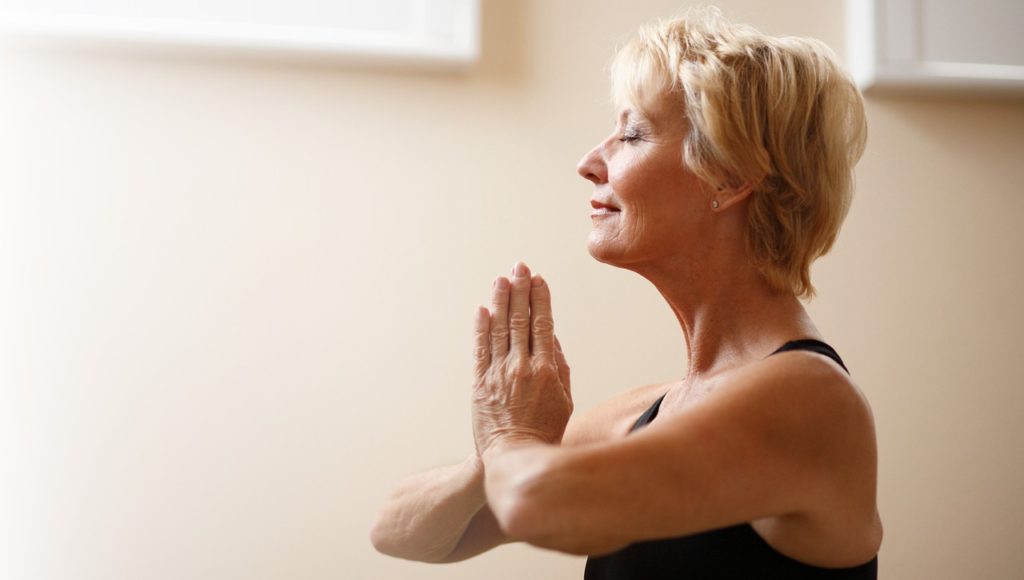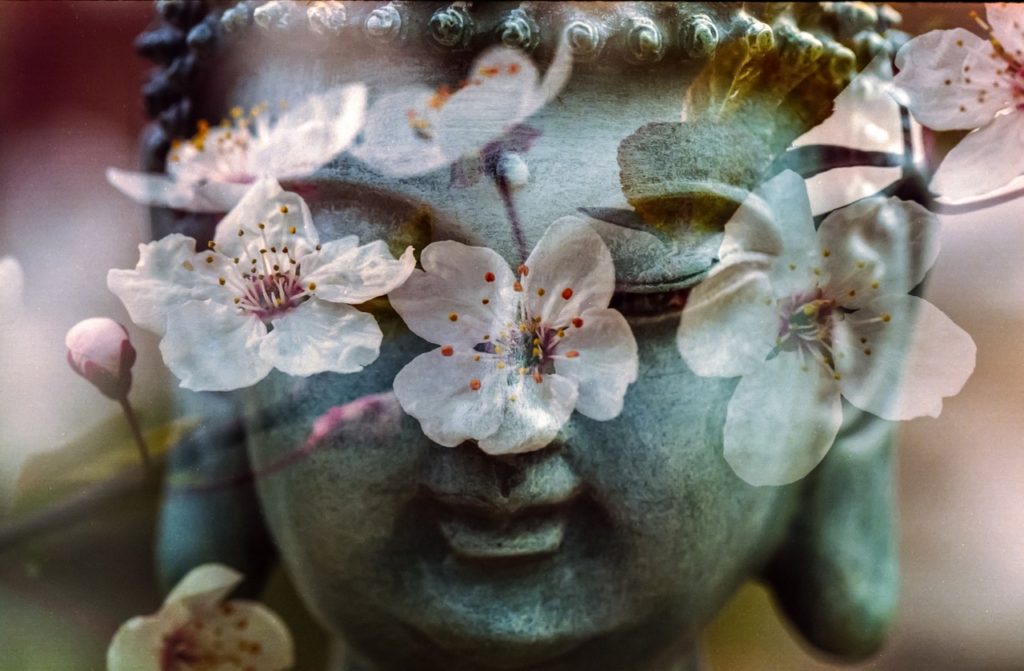Most instructors who share the yoga practice are asked at one point how yoga and meditation are alike.
It’s a complex question. Because meditation is a part of yoga but not vice versa. And there are definitely overlaps.
At the end of the day though, each practice offers its own unique journey. Here’s how it shakes out.
Another Complex Question
What is yoga? To answer this question completely would take far more than this post has to offer. One thing that yoga isn’t though is a religion. It’s really more a way of life.
Much of Westernized yoga is not representative of what initially came from India and the East. Unfortunately, it has become part of the Western commercial fitness complex. Twisting one’s self into a pretzel is a great party trick. But it’s not the point of the practice.

And while there are traditional yoga practices that require intense physical effort and focus, they aren’t intended to be performed to pounding music in environments with all sorts of gimmicky effects that serve as distractions.
Yoga comes from the word ‘yoke,’ which means unite. In this case, it is bringing together the mind and body. Many modern yoga students are introduced only to the poses though and little to none of the philosophy. They say they’re ‘going’ to yoga, work out for an hour or so, and then go about their business. But yoga is a way of life that’s meant to go far beyond the mat.
Uniting Mind, Body, and Spirit
Yoga, in its purest form, consists of eight limbs – also known as ashtanga. They are outlined in the ancient text of Patanjali’s Yoga Sutras.
The first two limbs are yamas and niyamas, which are ethical precepts that dictate harmonious living. Pranayama is the third limb and it’s connected with breath awareness. The fourth limb is asana which comprises the physical poses. The fifth limb, pratyahara, is a detachment from the senses and is considered the bridge between external yoga and internal yoga. The sixth and seventh limbs dharana and dhyana, deal with one-pointed focus and, for lack of a better term, meditation. And finally, samadhi – or enlightenment.
To simplify, through the discipline of breathing, one-pointed focus, and physical poses, the ultimate objective of yoga is to quiet the chattering of the mind. It’s a holistic yet practical approach to living in a healthy and mindful way.
So Then What Is Meditation?
To the outsider, meditation can look like a whole lot of nothing.
But for those who practice it, they know how rigorous it can be. And not in the physical way that yoga is. For the most part, meditation is done in stillness – either seated or prone. There are mindful walking meditations and physical practices like Tai Chi that hook into the meditative aspect. At its core though, meditation is very much about stillness.
When intentionally sitting or laying in stillness for a certain amount of time, the practitioner is giving the mind an opportunity to rest. Sometimes the focus is on the breath. Other times it may be on a sensation or a sound.

There is the misconception that one is supposed to let go of thoughts and feelings in meditation. But it’s really more about being with one’s thoughts and feelings and observing them from a more objective place. This is awareness.
Meditation aims to build the awareness muscle so that practitioners can more easily detach from their reactive selves and employ mindful responses in everyday situations. It trains the mind and body to remain calm and in touch with the essential and true self.
Just as there are many different kinds of yoga, meditation can also be broken down into several different categories. The destination is the same for all of them though – to become more aware of oneself in the present moment and without judgment. The paths just differ slightly.
How Yoga and Meditation Are Alike
It’s clear that both meditation and yoga include elements of mindfulness to help one live in the present moment through breath and awareness. Yoga just involves movement as well.
As mentioned above, meditation is traditionally a part of yoga. While one is working toward a meditative state even moving in and out of poses, an actual sitting meditation might be incorporated at the end of the physical practice of yoga when the body is filled with energetic vibrations from the physical practice. Additionally, the final post of the practice (sivasana, or corpse pose) also acts as a form of meditation. The goal is to stabilize both the mind and body at this point.
The health benefits derived from yoga and meditation are also aligned. Both work to activate the parasympathetic nervous system which helps slow the heart rate and improve digestion. The breathing work done in each practice also fuels the brain with more oxygen – which has countless benefits including improved memory and ability to learn as well as strengthening focus and concentration.
So it’s no wonder that both yoga and meditation are increasingly suggested for people struggling with stress, depression, anxiety, and a variety of other health issues.
Could You Use More Yoga and Meditation In Your Life?
Now that you understand just how much yoga and meditation are alike, and how much they can benefit you, you may be inspired to bring both of these practices into your life.
But with all the busyness of your life, how can you possibly add another thing? Contact us today to find out how we can bring these practices to you or your organization.
Along with our mobile coaching services, we can guide you to a more balanced and healthier life. And with much less stress.



